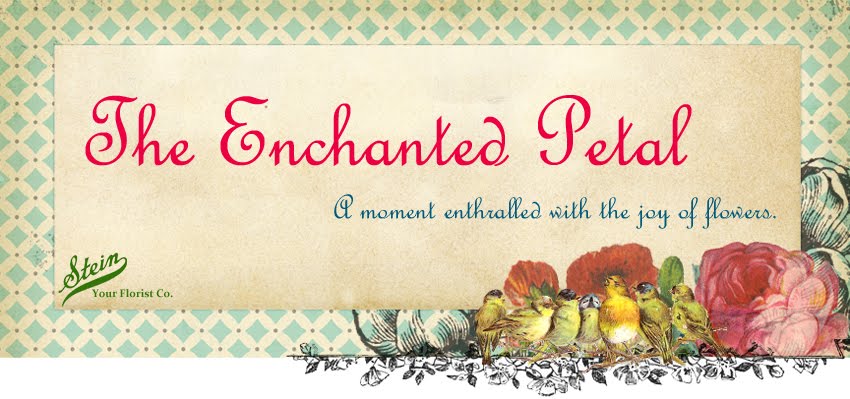 As part of our 125th Anniversary celebration
at Stein Your Florist Co. we are sharing a year of floral education, November
1, 2012 thru October 31, 2013. Each day we will post something new on our Facebook page to share
our knowledge of our favorite things, flowers and plants and we'll be updating
our blog every 5 days or so. No need for pencils and notebooks, just sharing
some simple lessons in floristry.
As part of our 125th Anniversary celebration
at Stein Your Florist Co. we are sharing a year of floral education, November
1, 2012 thru October 31, 2013. Each day we will post something new on our Facebook page to share
our knowledge of our favorite things, flowers and plants and we'll be updating
our blog every 5 days or so. No need for pencils and notebooks, just sharing
some simple lessons in floristry.
Day 146 -
Muscari is a genus of perennial bulbous plants native to Eurasia that produce
spikes of dense, most commonly blue, urn-shaped flowers resembling bunches of
grapes in the spring. The common name for the genus is Grape Hyacinth. Their
scent is said to resemble musk or honey.
Day 147 - The
flower symbolism associated with baby's breath is purity of heart, innocence,
and the breath of the Holy Spirit. Baby's breath is white with dense, delicate
clusters of flowers. They are native to Europe, but have been naturalized
throughout the eastern United States. Baby's breath is often used as ornamental
garden plants and as filler in bouquets.
 Day 148 - The
distinctive dried seed heads of the lotus, which resemble the spouts of
watering cans, are widely sold throughout the world for decorative purposes and
for dried flower arranging. The lotus flowers, seeds, young leaves, and
"roots" (rhizomes) are all edible. Dried lotus seeds, from pods or
lotus fruit such as these, are sold in packages or in bulk at many Asian
markets for consumption, but they must first be soaked in water overnight prior
to use due to their hardness and toughness. They can then be added directly to
soups and congee, or used in other dishes. Fresh lotus seeds are sold in the
seed heads of the plant and eaten by breaking the individual seeds out of cone
shaped head. The soft rubbery shell that surrounds each seed should be removed
before consuming.
Day 148 - The
distinctive dried seed heads of the lotus, which resemble the spouts of
watering cans, are widely sold throughout the world for decorative purposes and
for dried flower arranging. The lotus flowers, seeds, young leaves, and
"roots" (rhizomes) are all edible. Dried lotus seeds, from pods or
lotus fruit such as these, are sold in packages or in bulk at many Asian
markets for consumption, but they must first be soaked in water overnight prior
to use due to their hardness and toughness. They can then be added directly to
soups and congee, or used in other dishes. Fresh lotus seeds are sold in the
seed heads of the plant and eaten by breaking the individual seeds out of cone
shaped head. The soft rubbery shell that surrounds each seed should be removed
before consuming.
Day 149 -
When selecting hyacinths, choose flowers that have some of the bottom florets
beginning to open, while the upper blooms are still closed. This will ensure
that the entire stalk will bloom properly and that you don't have a bad bulb.
The exception to this rule is when you want the maximum effect of the flower
right away, say for instance a spring party, then go for full bloom. Also look
for stems with dark green foliage that stand firmly upright.
 Day 150 - The
tulip is a perennial, bulbous plant with showy flowers in the genus Tulipa, of
which up to 109 species have been described and which belongs to the family
Liliaceae. Originally from Persia and Turkey, tulips were brought to Europe in
the 16th century, where they got their common name from the Turkish word for
gauze (with which turbans were wrapped) - reflecting the turban-like appearance
of a tulip in full bloom.
Day 150 - The
tulip is a perennial, bulbous plant with showy flowers in the genus Tulipa, of
which up to 109 species have been described and which belongs to the family
Liliaceae. Originally from Persia and Turkey, tulips were brought to Europe in
the 16th century, where they got their common name from the Turkish word for
gauze (with which turbans were wrapped) - reflecting the turban-like appearance
of a tulip in full bloom.














